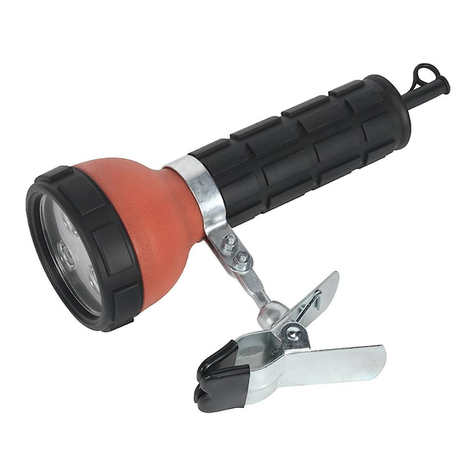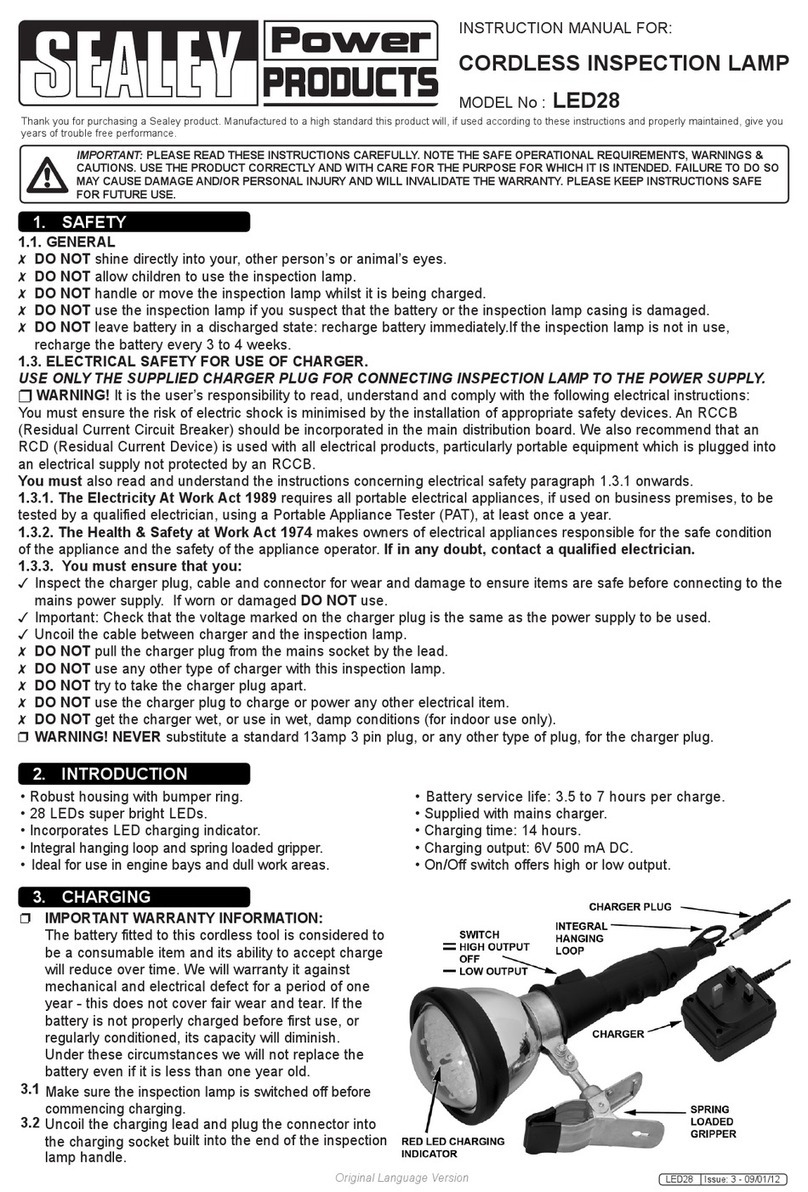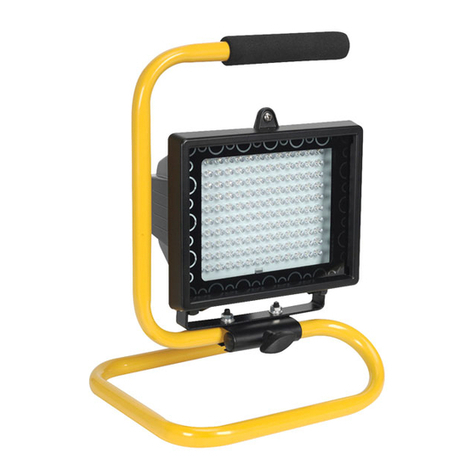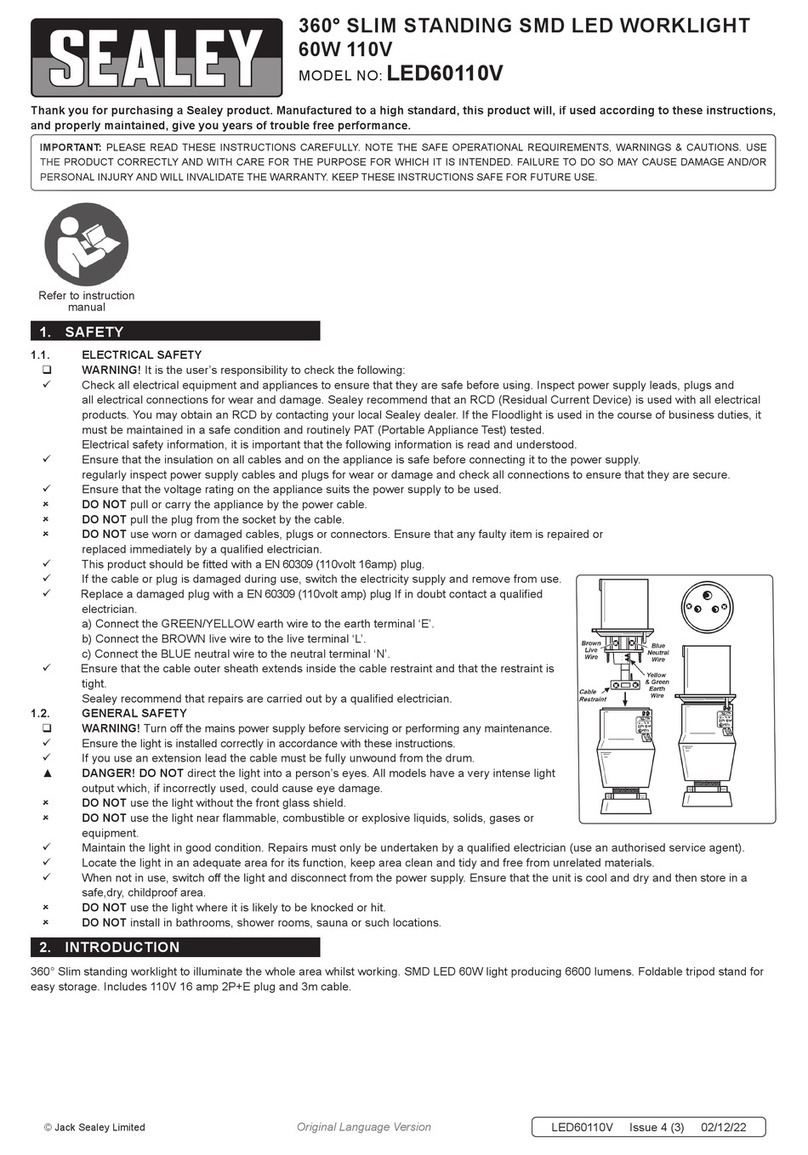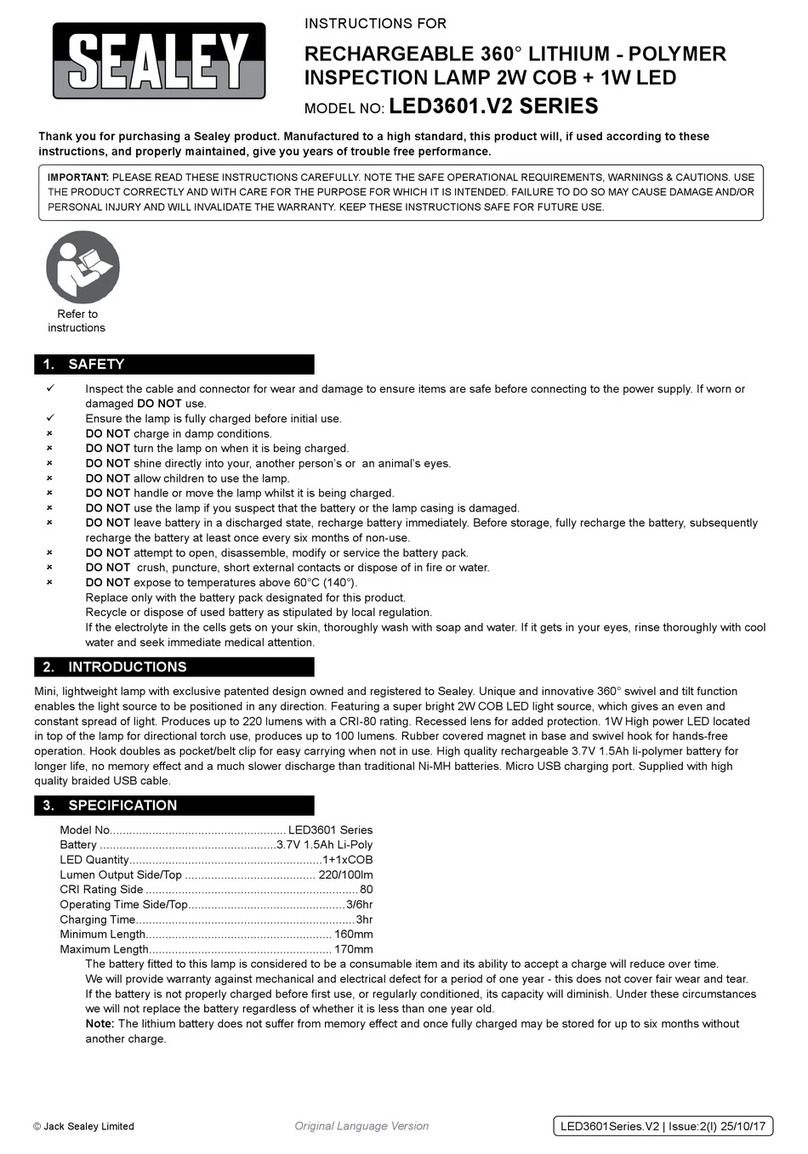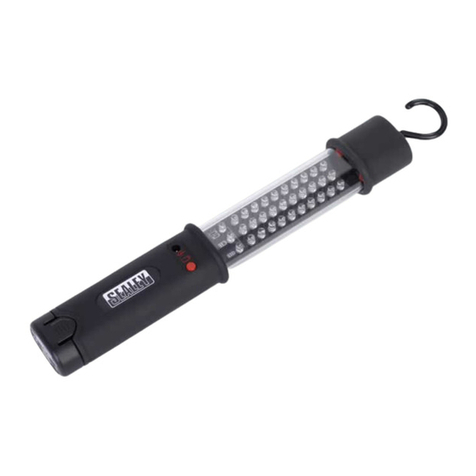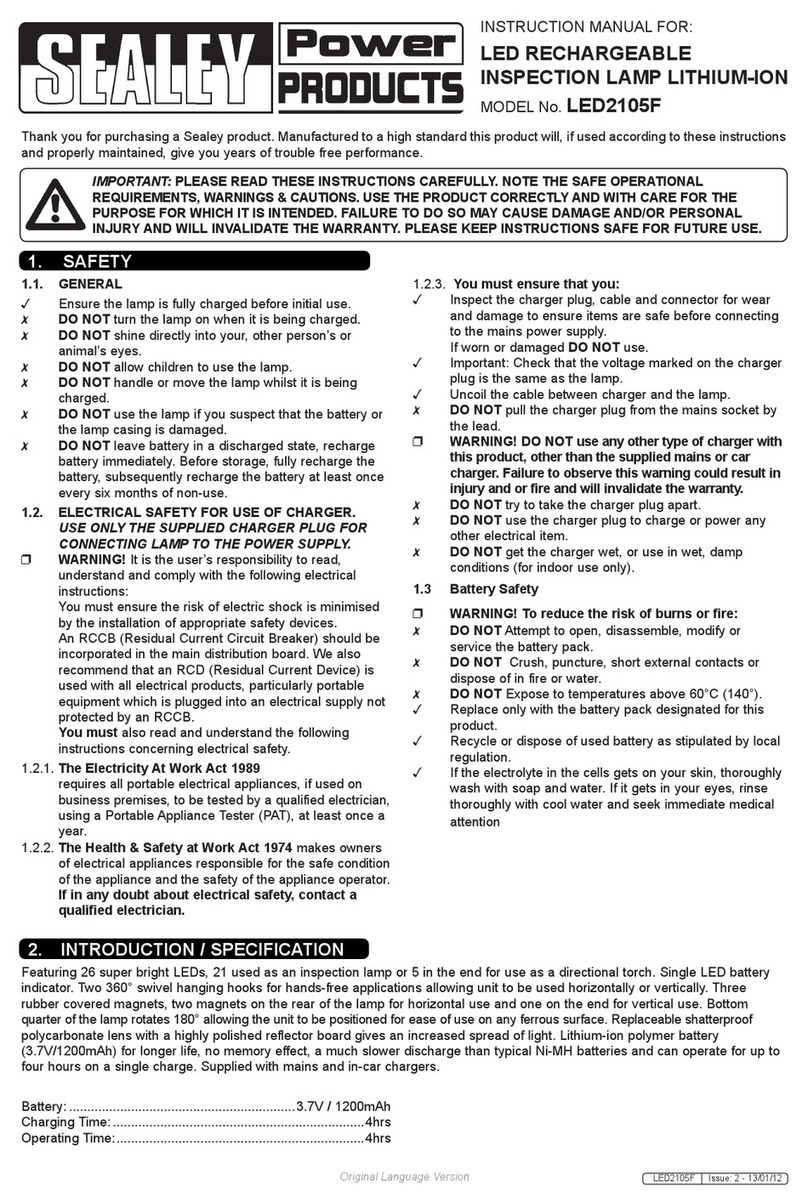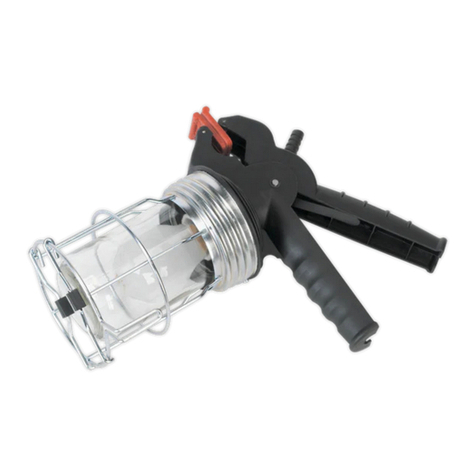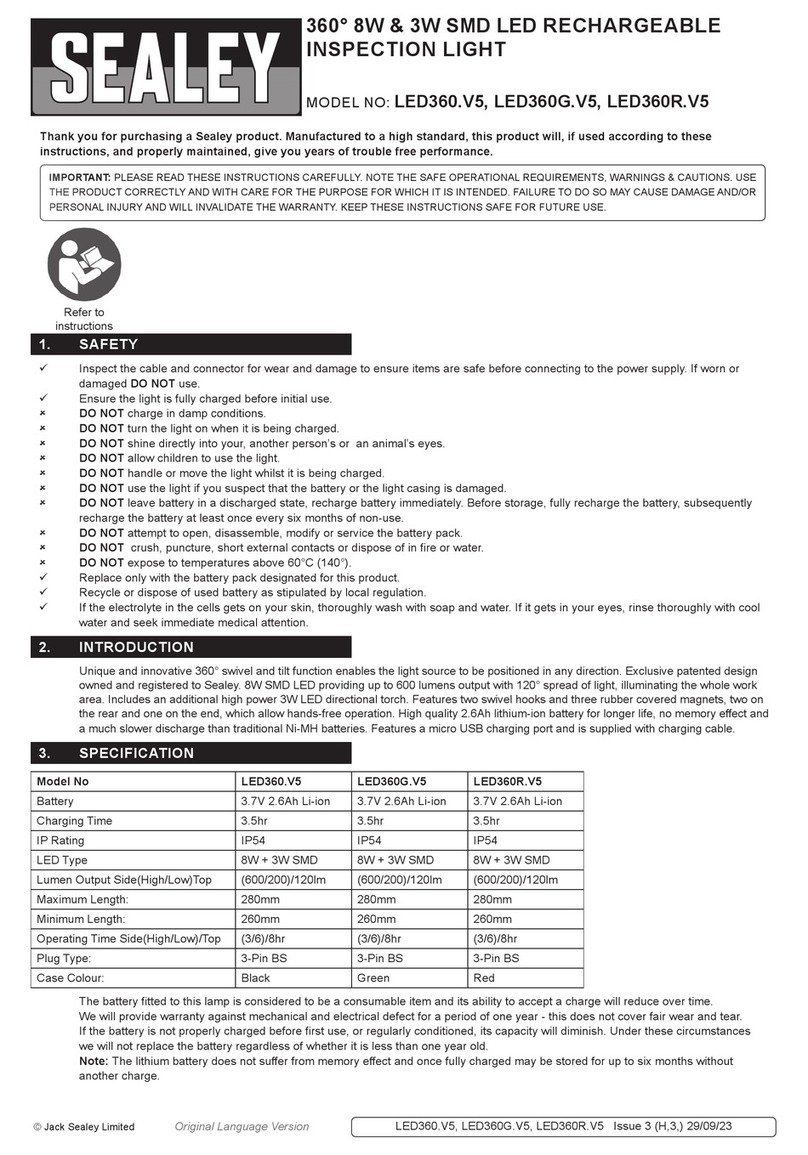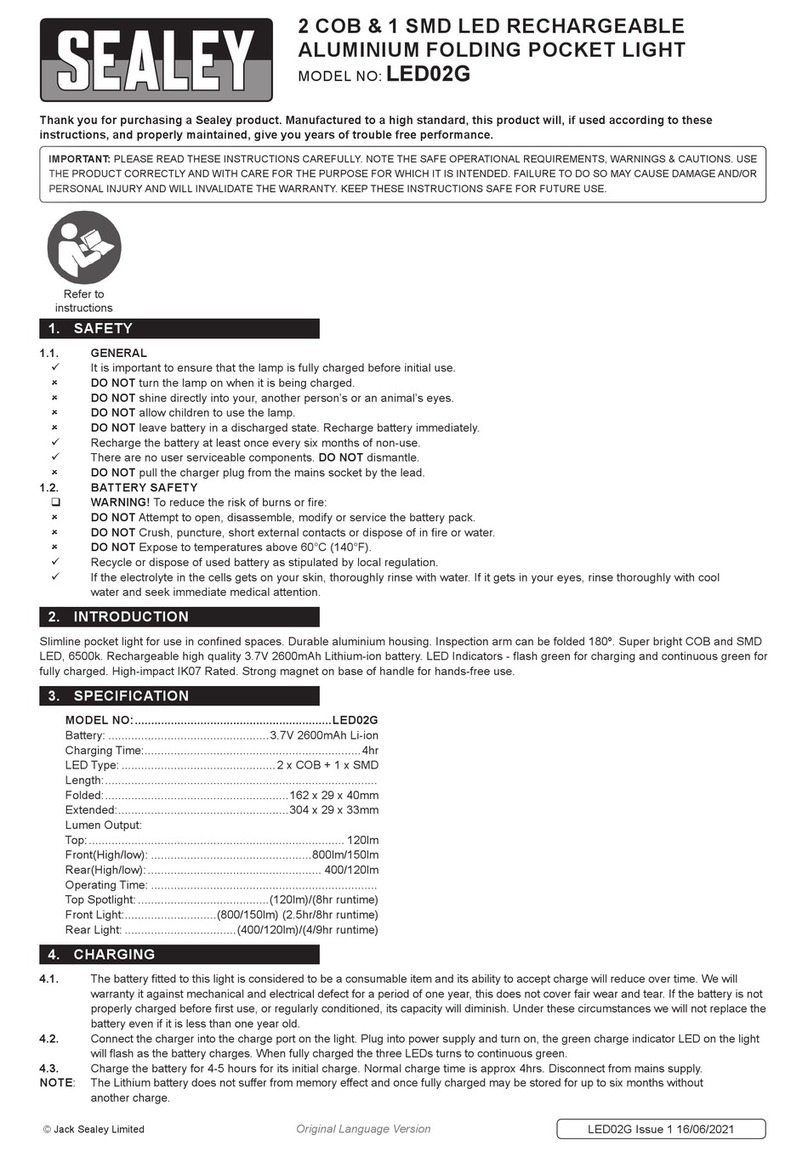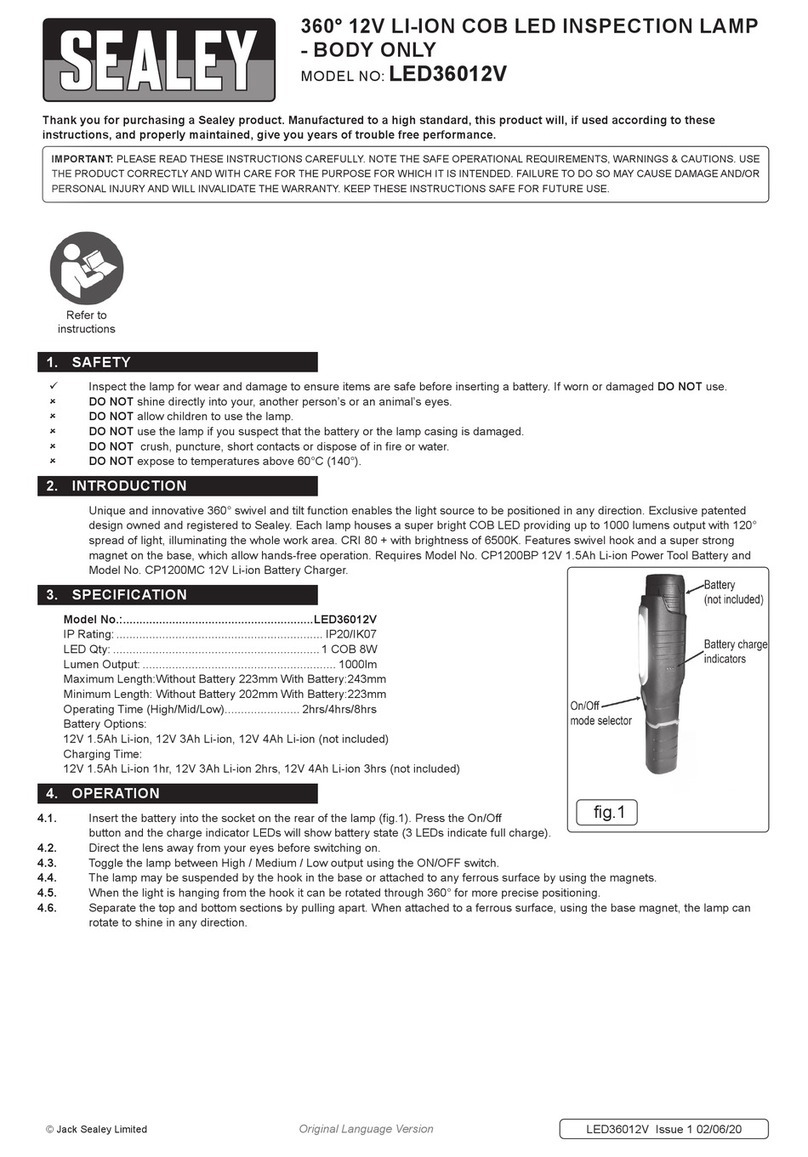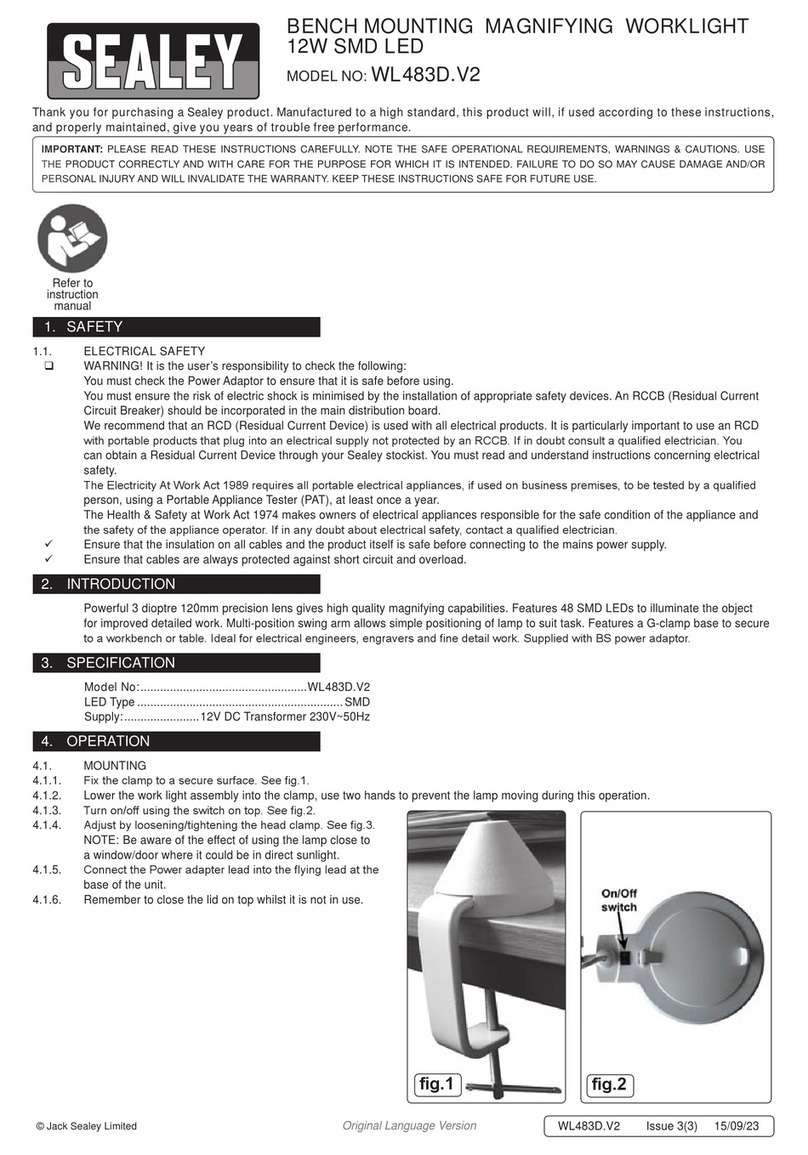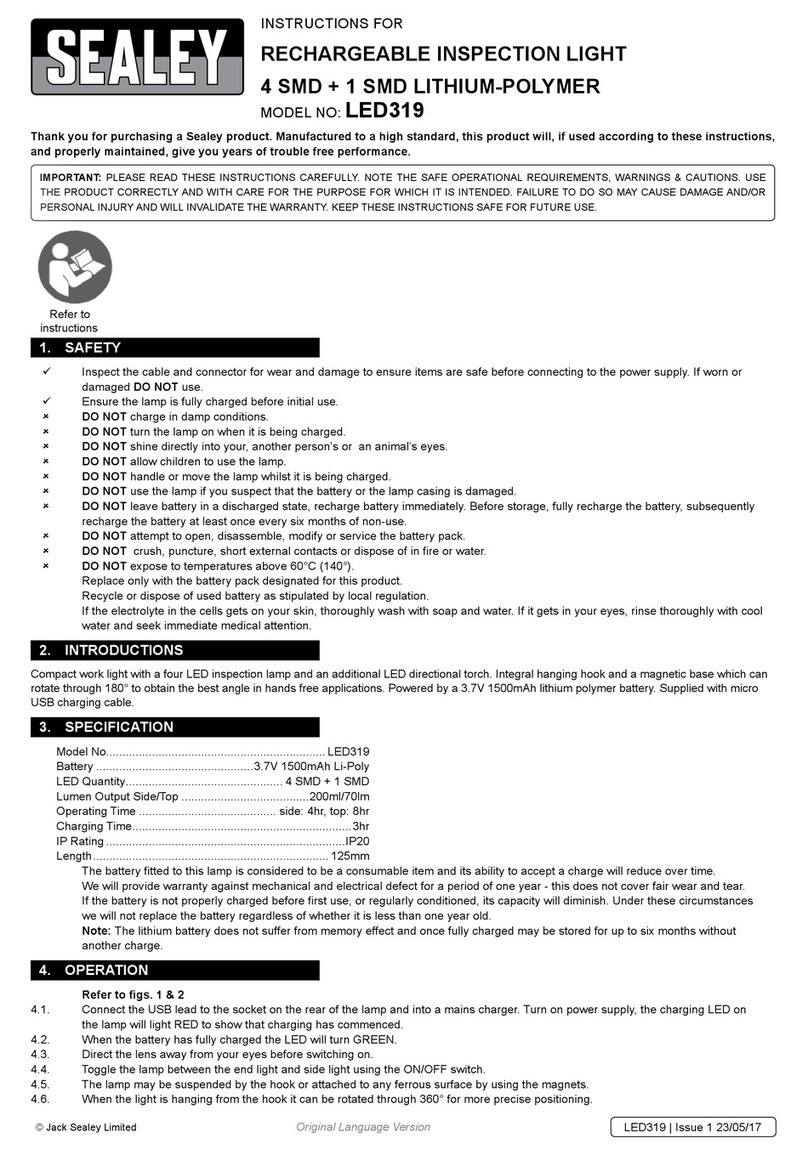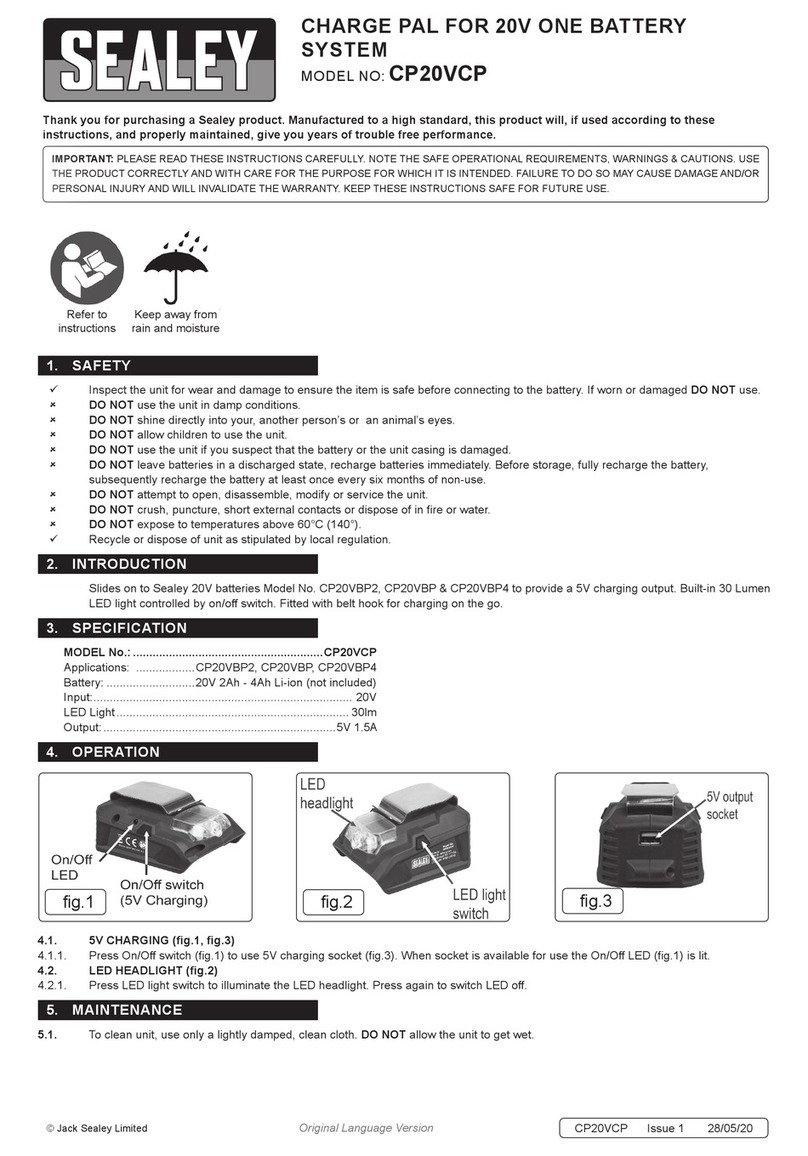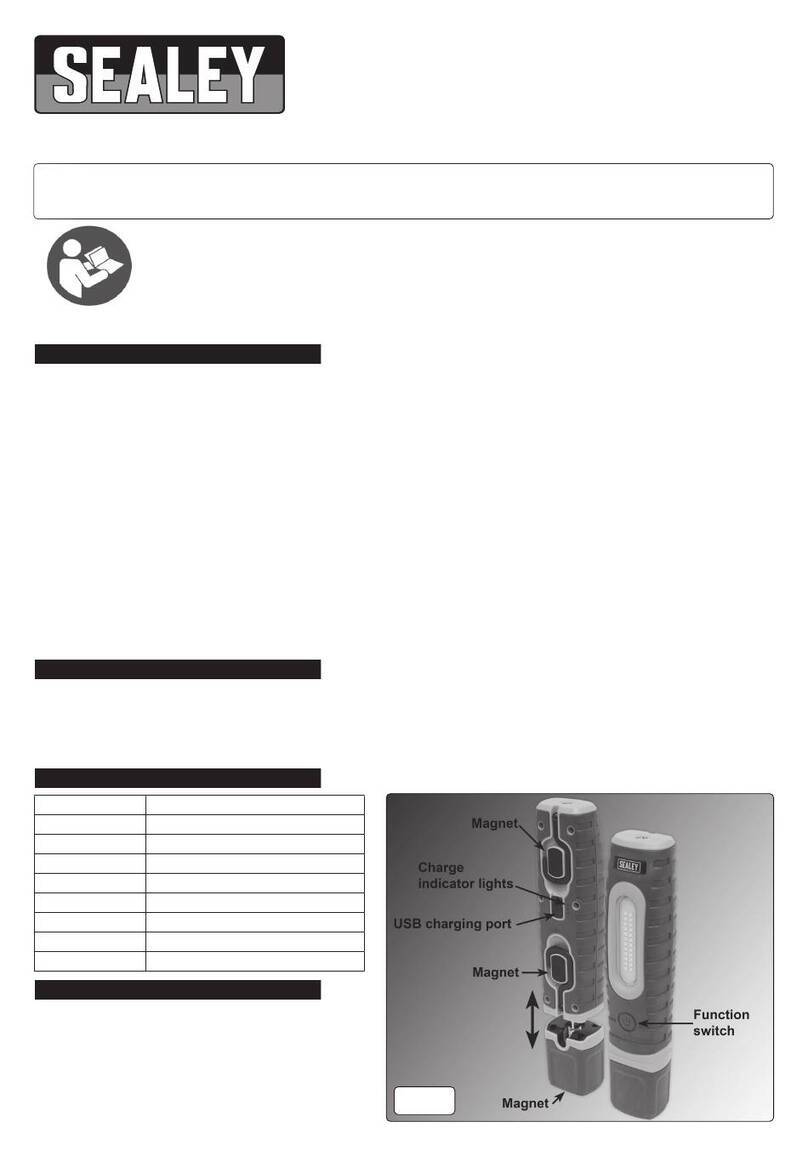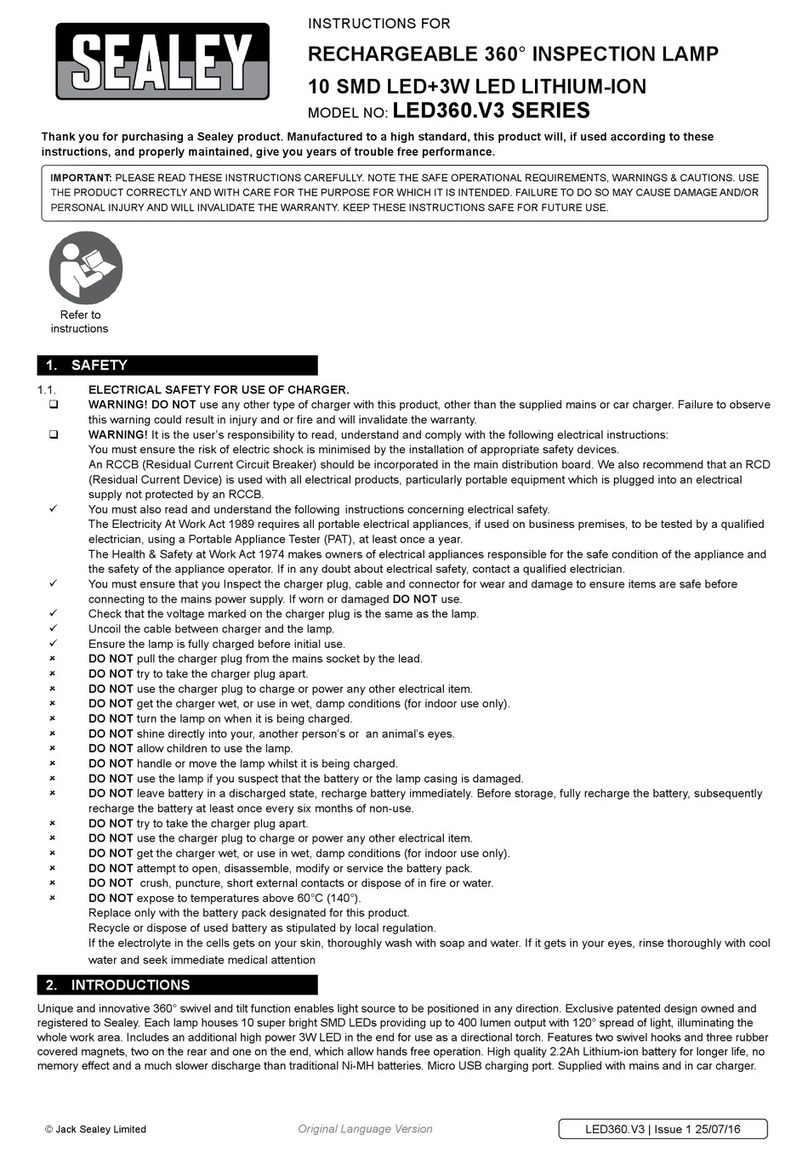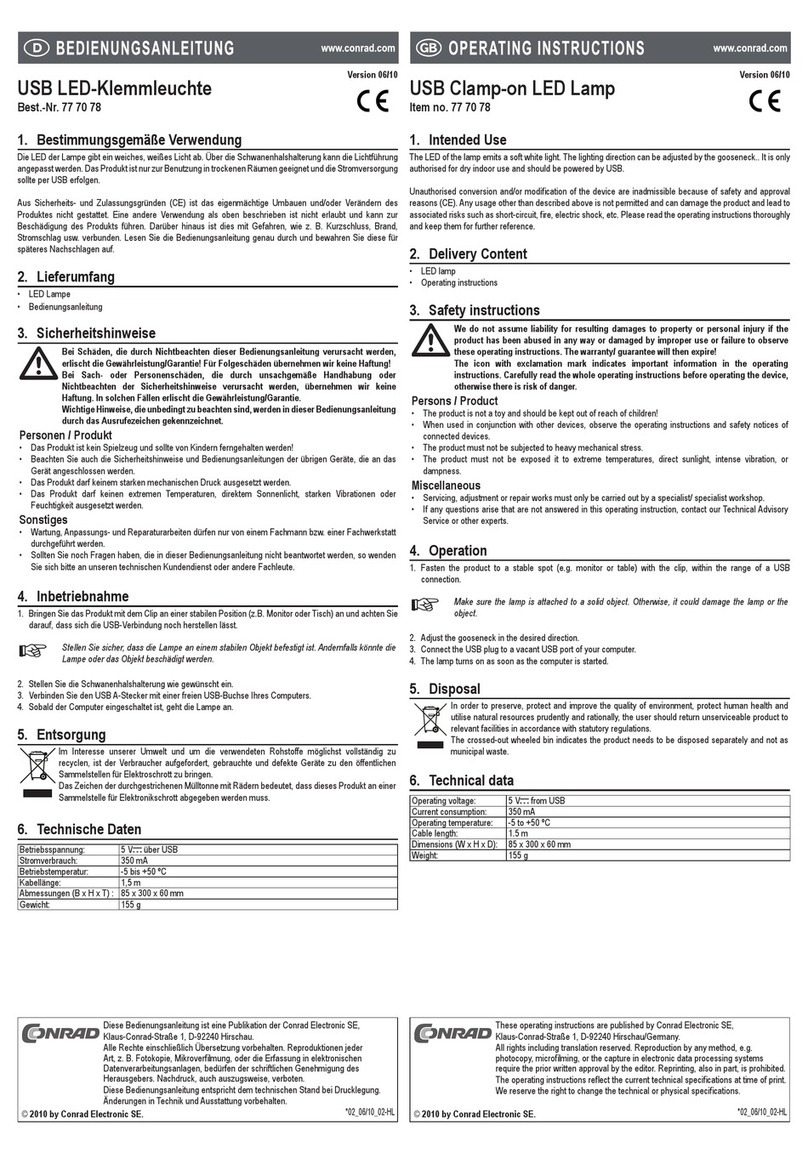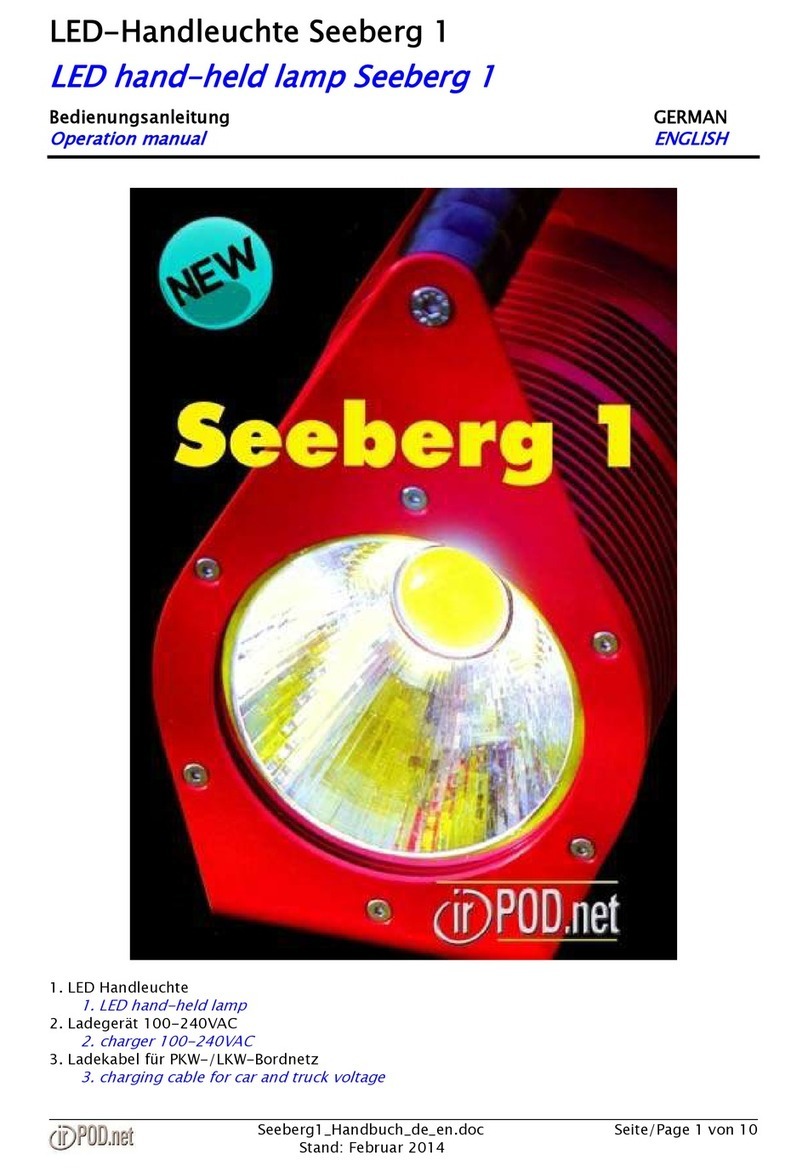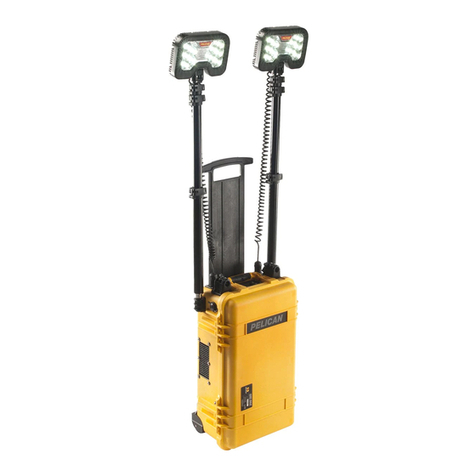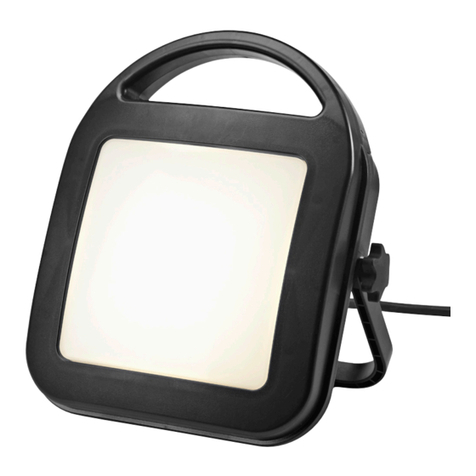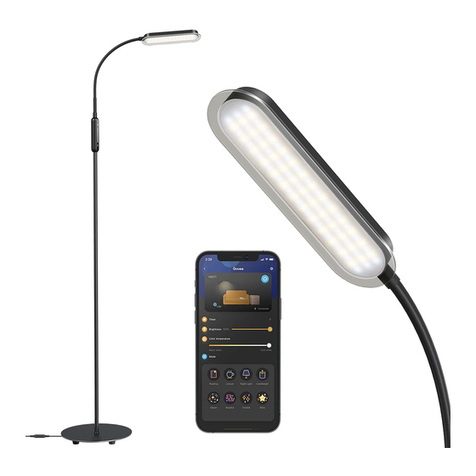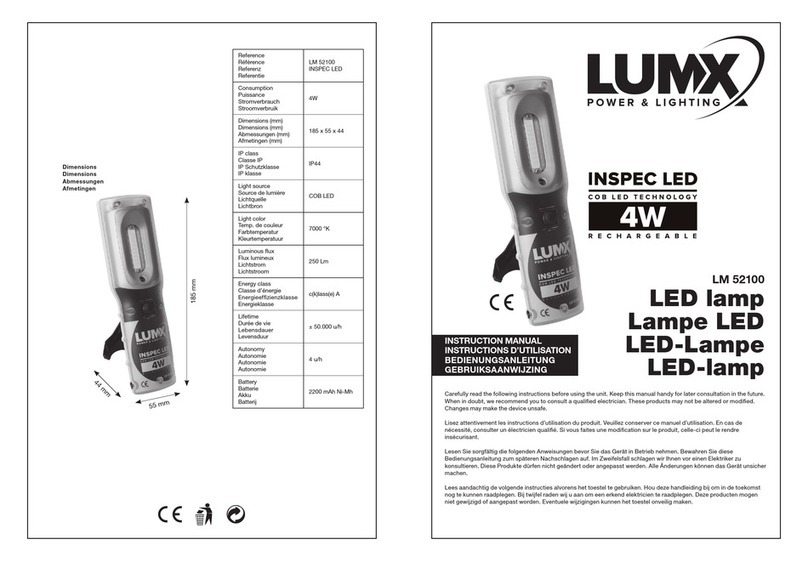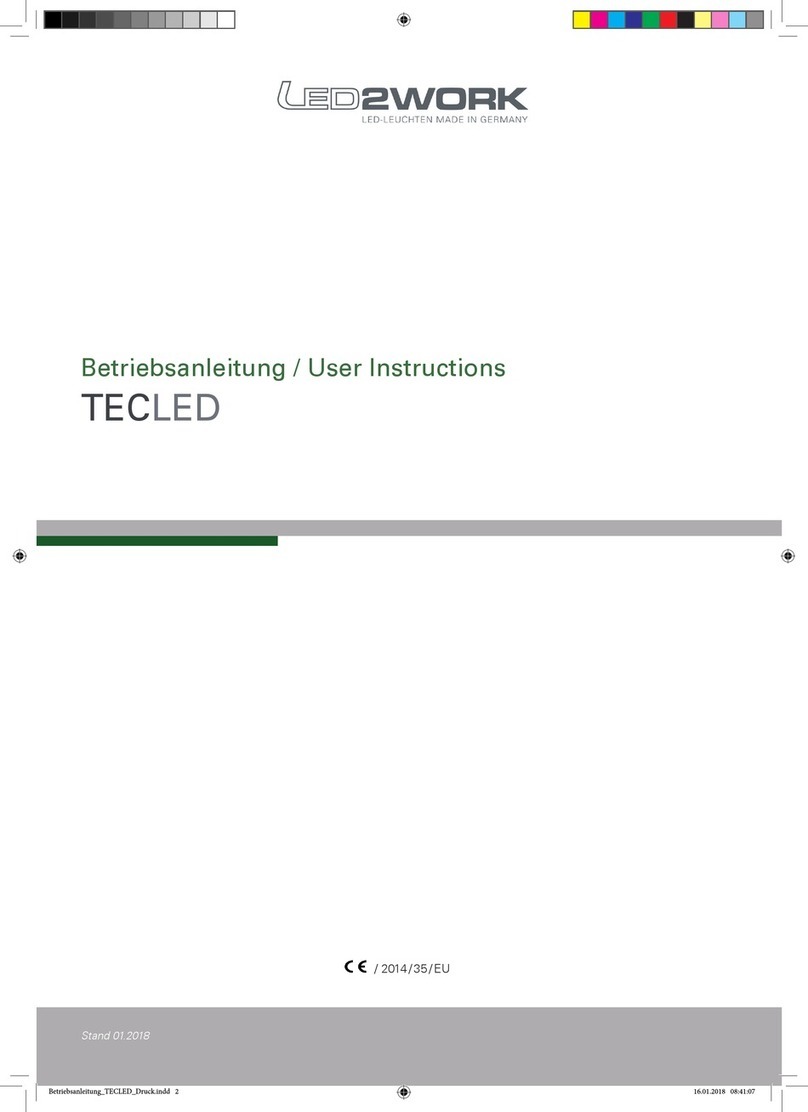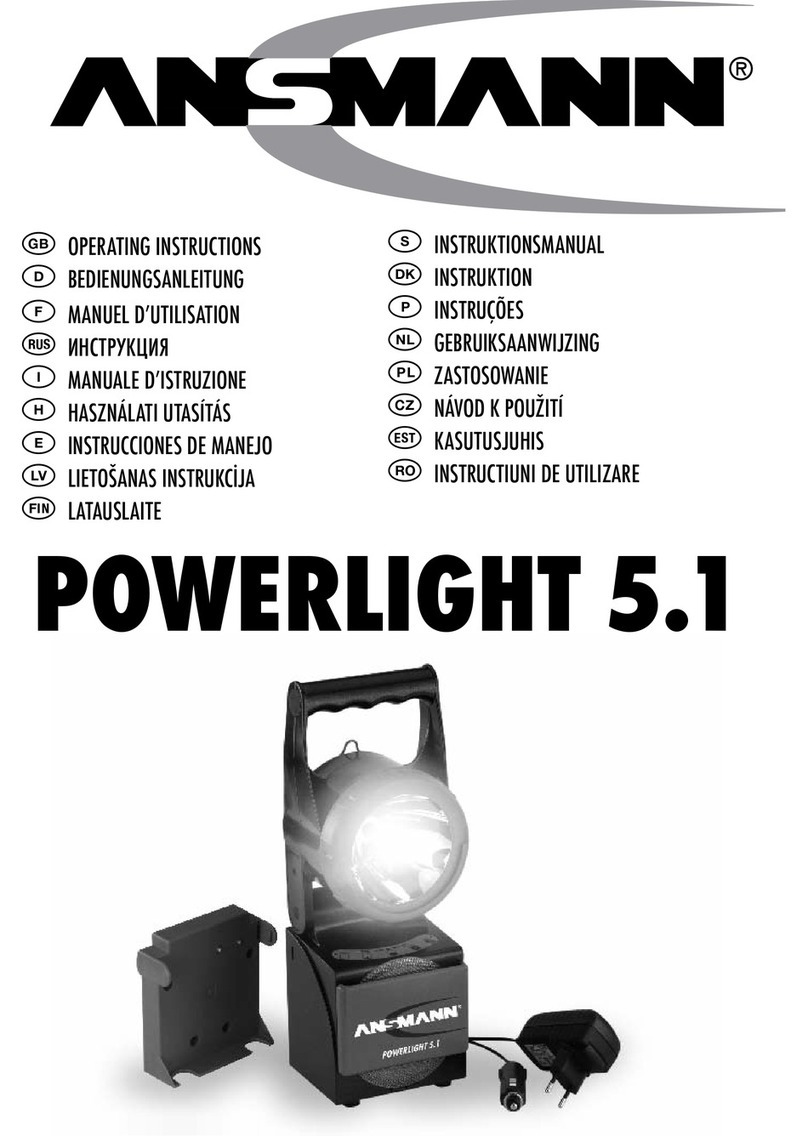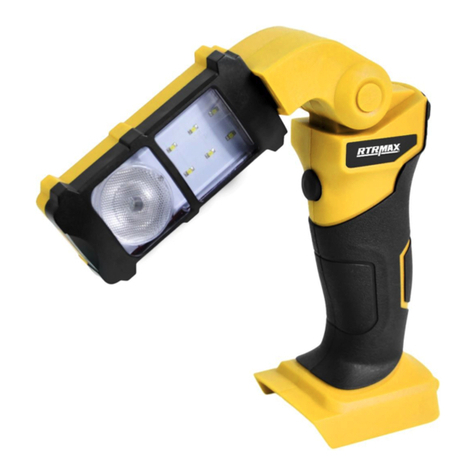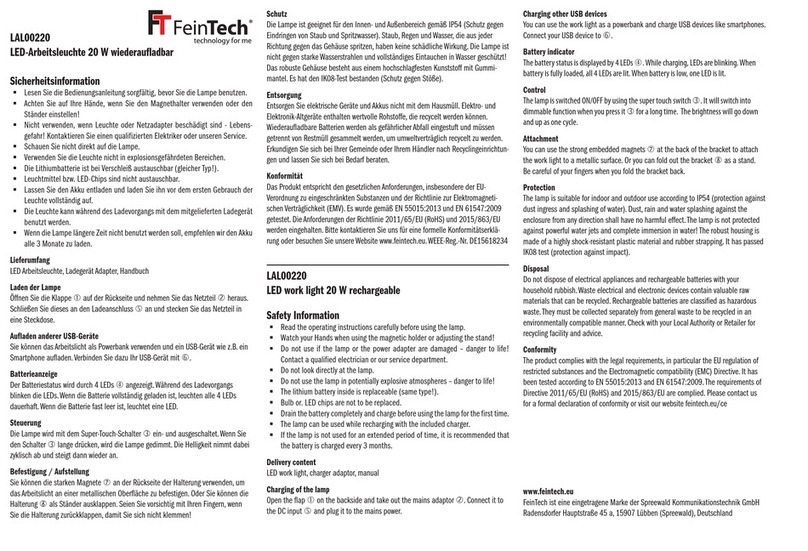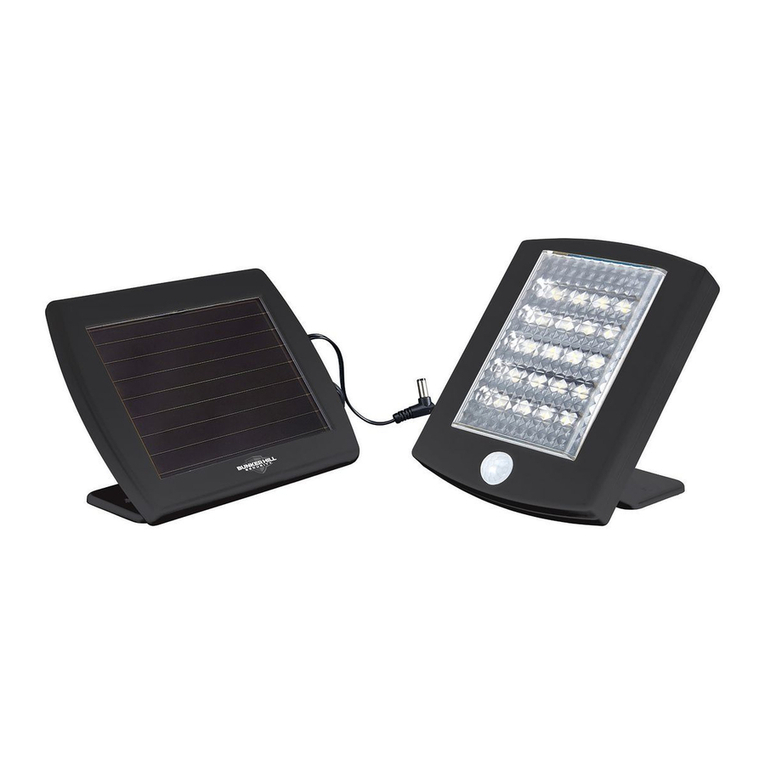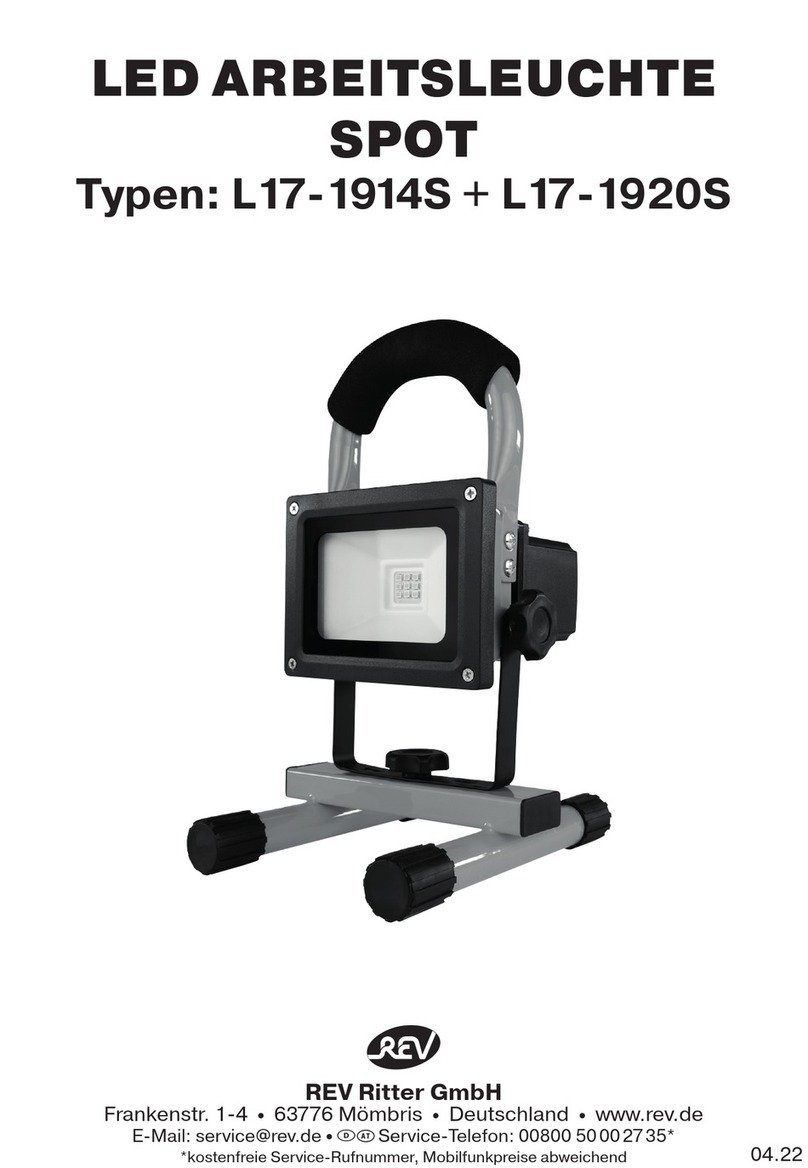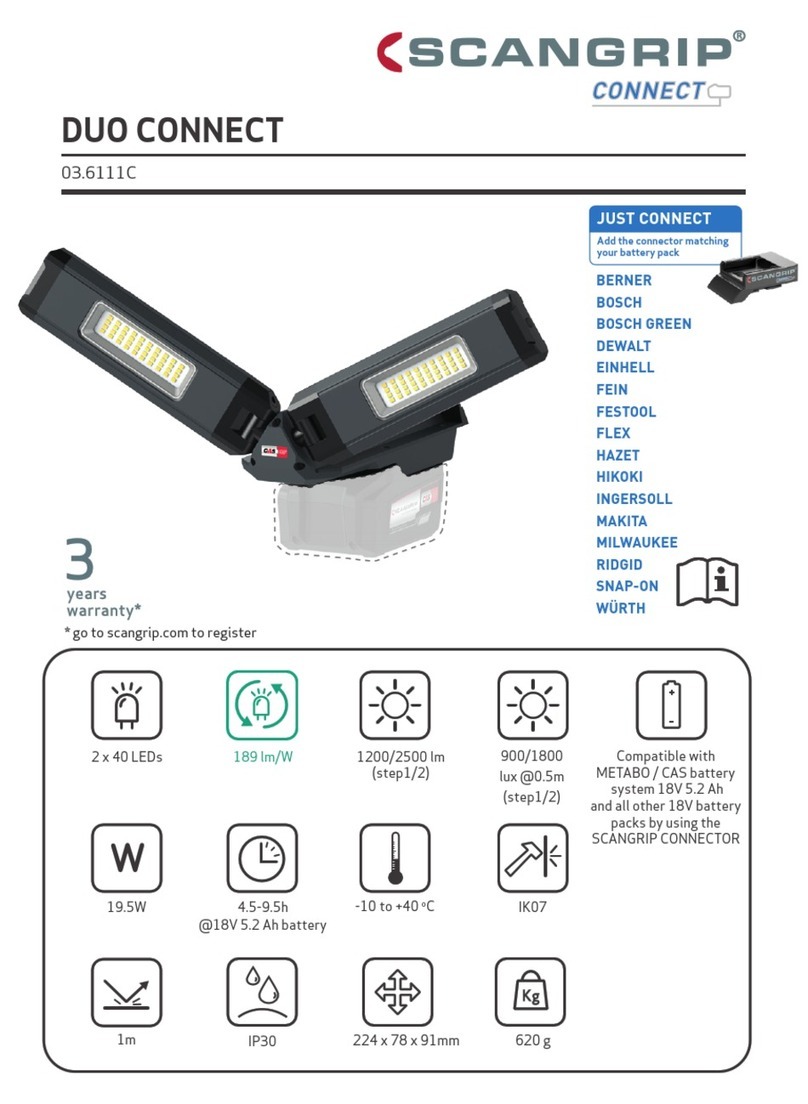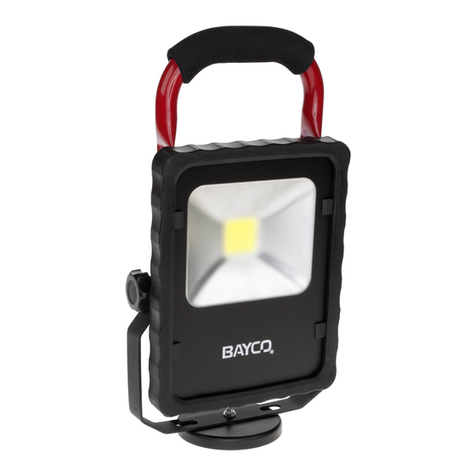
Instructions for: TIMING LIGHTS
Model Nos: TL84 & TL85
Thank you for purchasing a Sealey product. Manufactured to a high standard this product will, if used according to these instructions
and properly maintained, give you years of trouble free performance.
1. SAFETY INSTRUCTIONS
IMPORTANT: PLEASE READ THESE INSTRUCTIONS CAREFULLY. NOTE THE SAFE OPERATIONAL REQUIREMENTS, WARNINGS & CAUTIONS.
USE THE PRODUCT CORRECTLY AND WITH CARE FOR THE PURPOSE FOR WHICH IT IS INTENDED. FAILURE TO DO SO MAY CAUSE
DAMAGE AND/OR PERSONAL INJURY AND WILL INVALIDATE THE WARRANTY. PLEASE KEEP INSTRUCTIONS SAFE FOR FUTURE USE.
DANGER! - BE AWARE, LEAD-ACID BATTERIES GENERATE EXPLOSIVE GASES DURING NORMAL BATTERY OPERATION. FOR THIS REASON IT IS
VERY IMPORTANT TO READ AND FOLLOW THESE INSTRUCTIONS CAREFULLY, EACH TIME YOU USE THE TIMING LIGHT. Follow these
instructions and those published by the battery manufacturer and the maker of any equipment you intend to use in the vicinity of
the battery. Remember to review warning marks on all products and on engines. ,
1.1. PERSONAL PRECAUTIONS
3Ensure there is another person within hearing range of your voice and close enough to come to
your aid should a problem arise when working near a lead-acid battery.
3Wear safety eye protection and protective clothing. Avoid touching eyes while working near battery.
3Have fresh water and soap nearby in case battery acid contacts skin, clothing, or eyes.
3Wash immediately with soap and water if battery acid contacts skin or clothing. If acid enters eye, flush eye immediately with cool, clean
running water for at least 15 minutes and seek immediate medical attention.
3Remove personal metallic items such as rings, bracelets, necklaces and watches. A lead-acid battery can produce a short-circuit current
high enough to weld a ring or the like to metal and may cause severe burns.
3Ensure hands, clothing (especially belts) are clear of fan blades and other moving or hot parts of engine, remove ties and contain long hair.
7DO NOT smoke or allow a spark, or flame, in the vicinity of battery or engine.
3Remember that a flashing timing light freezes rotating components. DO NOT be tempted to touch an apparently stationary component
which is, in fact, rotating.
pWARNING! When ignition is on DO NOT touch any ignition components - very high voltages are present.
1.2. GENERAL SAFETY INSTRUCTIONS
pWARNING! When running an engine in an enclosed space ensure adequate ventilation or ducted exhaust. Exhaust gases kill.
3Keep children and unauthorised persons away from the working area.
3Ensure vehicle transmission is in Neutral (manual) or Park (automatic) and the parking brake is applied.
3Ensure the ignition is switched off before attaching the power clamps to the battery.
3Keep tools and other items away from the engine and ensure that you can see the battery and working parts of engine clearly.
3If the battery terminals are corroded or dirty, clean them before attaching the timing light clamps.
7DO NOT dis-assemble the timing light for any reason. The timing light must only be checked by qualified service personnel.
pWARNING! DO NOT allow metal tools or equipment to accidentally touch battery terminals since this may produce sparks or a short circuit
resulting in an explosion.
7DO NOT cross-connect leads from the timing light to the battery. Ensure positive (+) (RED) is to positive and negative (-) BLACK is to negative.
If symbols cannot be distinguished, negative terminal is normally the one directly connected to the vehicle bodywork (check vehicle hand-book).
7DO NOT allow inductive pick-up, or leads, to contact exhaust or other engine parts as the heat will cause damage.
7DO NOT pull the cables or clamps from the battery terminals.
7DO NOT use the timing light outdoors, or in damp, or wet locations, and DO NOT operate within the vicinity of flammable liquids or gases.
7DO NOT use the timing light for a task for which it is not designed.
3When not in use, store the timing light in a safe, dry, childproof location.
TL84 AND TL85. Composite cased Xenon timing light with inductive impulse pick up. 8000rpm Maximum. Supplied with 1.5 mtr of coiled 12V
power supply lead, complete with female 4 pin socket that plugs into the timing light handle, Inductive coupler and operating instructions.
TL85 Measures timing advance range 0 - 60º BTDC.
Specifications: TL84 TL85
Ignition Advance 0°- 60° BTDC
Max rpm 8000 8000
Operating Voltage 12V 12V
2. INTRODUCTION & SPECIFICATIONS
3. WHAT IS TIMING?
In order for an automobile engine to function, three things are necessary: air, fuel and a spark to ignite the air/fuel mixture and create an
explosion. The precise instant of the explosion must be timed so that maximum force is delivered to the engines piston. This is timing. Each
engine manufacturer tells its factory the exact timing necessary for various engines so that every possible amount of power is obtained from
each litre of fuel. As normal engine and ignition systems wear, the timing can change, thereby reducing both power and mileage. With the
TL84 or TL85 Timing Light, you can reset the timing to the manufacturers standard, regain lost power and increase mileage.
Timing is given in Degrees Before Top Dead Centre (BTDC) or After Top Dead Centre (ATDC). In order to completely burn the air/fuel mixture
in the cars cylinders, most timing is such that the spark occurs at a point several degrees BTDC (for example 4°BTDC). This ensures that the
full power of the explosions obtained (see fig 1).Two additional terms used when describing timing are Advanced and Retarded.
As shown in figure 1, when the timing is advanced the spark will occur BTDC. On some late model cars equipped with various emission
control devices, the timing is retarded so that the spark occurs ATDC. Timing is changed by adjustment of the ignition distributor.
In order to allow setting and adjustment of the engine timing, timing marks are provided on each engine during assembly. In most cases,
these marks appear on the engine vibration damper or fan pulley at the lower front of the engine (figure 1). On some early engines, this mark
was shown at the rear of the engine on the flywheel.
TL84 & TL85 - 1 - 151003

